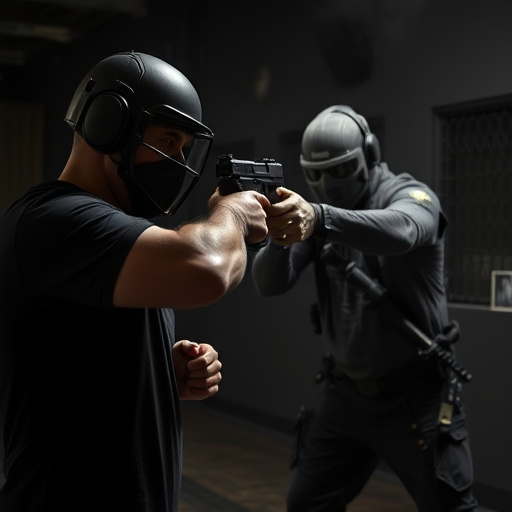Stun weapons, for self-defense, fall into projectile (stun guns/tasers) and contact (batons) types. Projectile tools operate from distance, while contact ones require direct impact. Effective use demands understanding each type's mechanics, especially proper charging for optimal shock delivery. Safety is paramount; always charge stun devices fully before use, store safely, train properly, and consult legal regulations globally. Choose between projectile and contact weapons based on range/power or ease of use, ensuring responsible ownership through correct charging procedures.
“In the realm of personal defense, stun weapons have emerged as powerful tools, offering alternatives to traditional firearms. This article explores two primary types: projectile and contact stun devices. We delve into the key differences, from range and effectiveness to safety measures and legal aspects.
Learn the ins and outs of charging a stun gun properly, ensuring optimal performance when it matters most. Discover the ideal choices for your specific needs, keeping in mind the importance of understanding local laws.”
- Understanding Projectile and Contact Stun Weapons
- Key Differences: Range and Effect
- Charging a Stun Gun: Essential Steps
- Safety Precautions for Stun Weapon Users
- Legal Considerations: Ownership and Use
- Choosing the Right Stun Tool for Your Needs
Understanding Projectile and Contact Stun Weapons
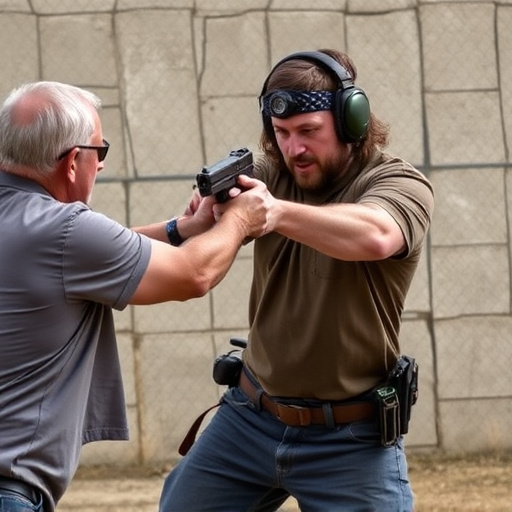
Stun weapons are a popular choice for self-defense, but they can be categorized into two main types: projectile and contact. Projectile stun devices, such as stun guns or tasers, work by firing an electric charge at the target from a distance. These weapons use electricity to disrupt muscle control, causing temporary immobilization. Proper charging is crucial for their effectiveness; users must follow specific instructions to ensure the device delivers the intended shock.
Contact stun weapons, like batons or stun batons, require direct contact with the aggressor. They utilize kinetic energy and electrical current to stun the target through physical impact. Unlike projectiles, these tools demand close proximity and proper handling techniques to maximize their stun potential. Understanding the mechanics of each type is essential for users to make an informed choice based on their specific needs and preferences, including learning the correct procedures for how to charge a stun gun.
Key Differences: Range and Effect
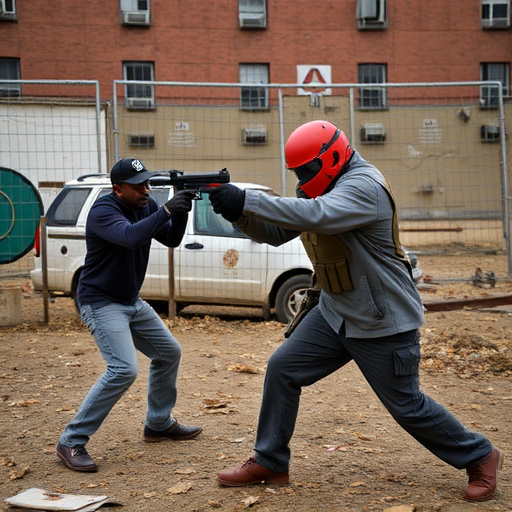
Projectile and contact stun weapons differ significantly in their range and effect, with each having unique advantages and applications. Projectile stun devices, such as stun guns or beanbag bullets, operate by firing a small projectile at high velocity towards the target. This method provides a strategic advantage, allowing users to disable an opponent from a safe distance—a crucial feature for self-defense scenarios where minimizing physical contact is desirable. The range of these weapons varies; some stun guns offer a powerful shockwave over 20 feet away, while beanbag rounds typically have a range of around 15 yards. Despite their range, the effect can vary; beanbags, for instance, may not penetrate protective gear or deliver a consistent stun due to their soft nature.
In contrast, contact stun weapons, like electric stun batons or tasers, require physical contact to deploy their stun effect. They work by delivering an electrical current through two probes or electrodes pressed against the target’s body. This direct contact ensures a more reliable stun, often rendering the subject incapacitated for several minutes. However, the range is significantly limited to just a few feet, necessitating close proximity to the target. Proper usage involves learning how to charge a stun gun and employing precise, controlled pressure on pressure points or nerve centers. Understanding these key differences helps individuals choose between projectile and contact weapons based on their specific needs, ensuring effective yet safe incapacitation.
Charging a Stun Gun: Essential Steps
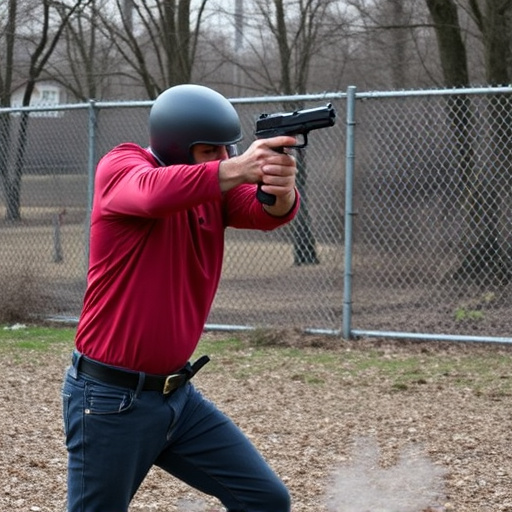
Charging a stun gun properly is crucial for its effectiveness and safety. To start, ensure your device is turned off before beginning the charging process. Next, locate the charging port, usually on one side of the stun gun. Connect the provided charger securely to both the stun gun and a power source, such as an outlet or computer USB port. The LED light should indicate when the charging process has begun.
Allow the stun gun to charge fully, typically taking 2-3 hours. Regular maintenance involves charging your stun gun periodically, as battery life varies based on usage frequency. Always refer to the manufacturer’s guidelines for specific instructions tailored to your device model.
Safety Precautions for Stun Weapon Users

Stun weapon users must prioritize safety above all else. When using a stun device, such as a stun gun or Taser, it’s crucial to understand and adhere to proper charging procedures. Always ensure the device is fully charged before each use; an empty or partially charged device may not deliver the intended shock, leaving you vulnerable in a potentially dangerous situation. Keep your stun weapon away from children and unauthorized individuals; proper storage and handling are key to preventing accidental discharge.
Additionally, users should be trained in the correct usage techniques to minimize risk. This includes learning the appropriate range for effective deployment, understanding the device’s safety features, and knowing how to safely render assistance after use. Regular maintenance is also essential; keep your stun weapon clean and inspect it regularly for any signs of damage or malfunction. Following these safety precautions ensures responsible use, maximizing the effectiveness of the stun weapon while minimizing potential harm to yourself and others.
Legal Considerations: Ownership and Use
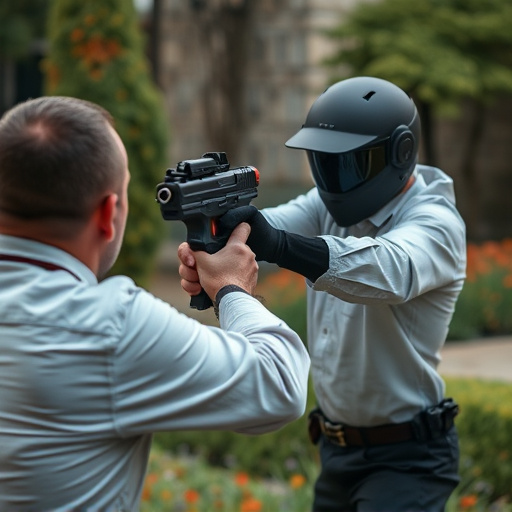
The legal landscape surrounding stun weapons, also known as electroshock weapons or stun guns, varies significantly across jurisdictions. Understanding local laws is paramount before considering ownership and use. In many countries, stun devices are classified as firearms or weapons, necessitating permits, licenses, or registration for possession. Some regions have strict restrictions on their sale and deployment, while others allow them for personal protection with certain limitations.
Proper usage involves learning not only the device’s activation mechanisms but also the legal implications of misuse. Training in safe handling, including how to charge stun guns properly according to manufacturer guidelines, is essential. This knowledge ensures accountability and minimizes risks associated with unexpected deployment or illegal possession, reinforcing responsible ownership practices.
Choosing the Right Stun Tool for Your Needs
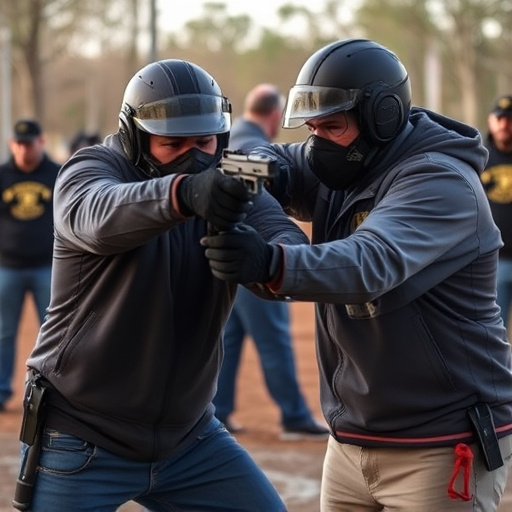
Choosing the right stun tool is a crucial step in ensuring your safety and effectiveness. The primary distinction lies between projectile and contact stun weapons, each with unique advantages. Projectile stun guns, like tasers, operate by delivering an electrical charge from a distance, making them ideal for de-escalating situations quickly without close contact. On the other hand, contact stun devices, such as stun batons or personal stun guns, require direct physical contact to deploy their electric shock, offering more control in close-quarters scenarios.
When selecting your stun device, consider factors like range and power for projectile weapons, or ease of use and portability for contact options. Proper charging is also essential, especially for rechargeable models, ensuring optimal performance when needed. Remember, understanding the specific needs of your situation will help guide your choice, enhancing your ability to defend yourself effectively.
Stun weapons, whether projectile or contact-based, offer individuals a means of self-defense. Understanding the key differences between them, such as range and effect, is crucial for making an informed choice. Properly charging your stun device, following safety precautions, and knowing legal considerations are essential steps to ensure effective and responsible use. By considering these factors, you can choose the right stun tool tailored to your needs while adhering to best practices and local regulations. For expert guidance on how to charge a stun gun properly, consult reliable sources and professionals in the field.
